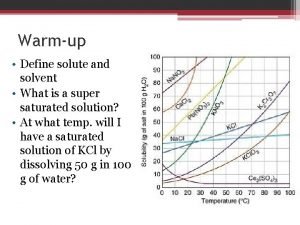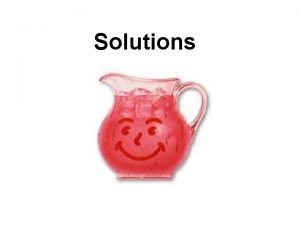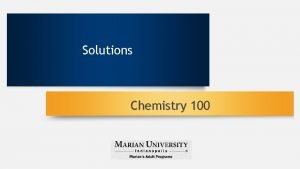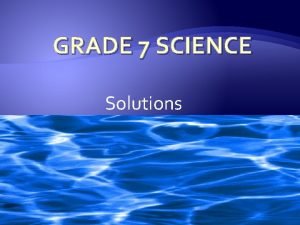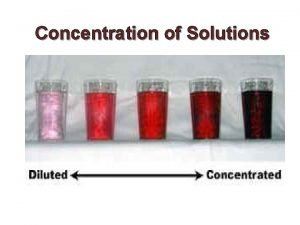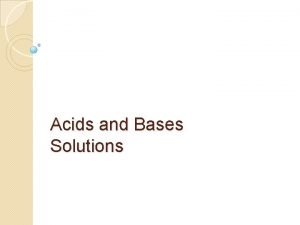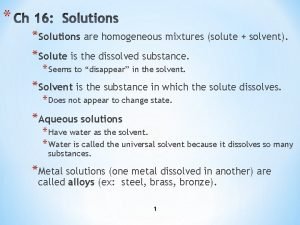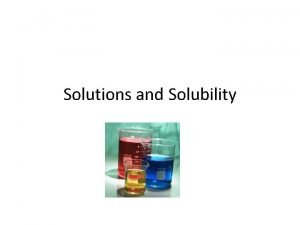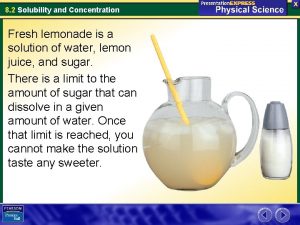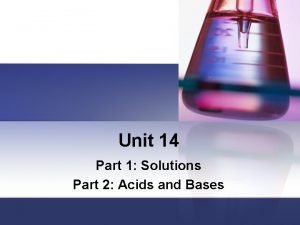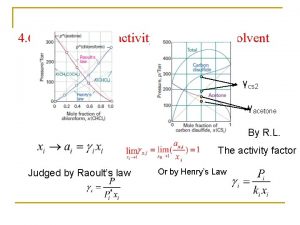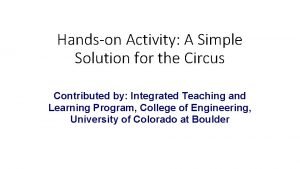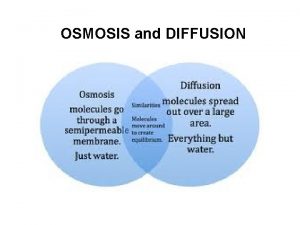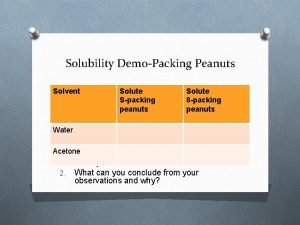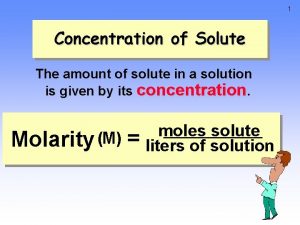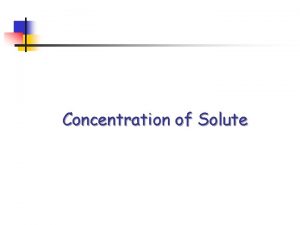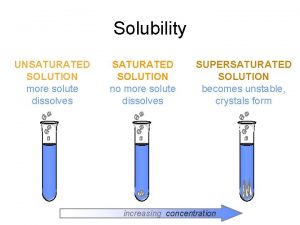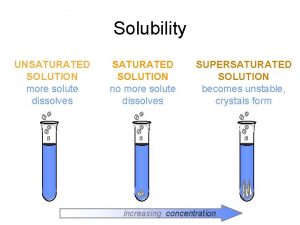4 6 Real solution activity of solute and


















- Slides: 18

4. 6 Real solution: activity of solute and solvent γcs 2 γacetone By R. L. The activity factor Judged by Raoult’s law Or by Henry’s Law

Example: 0 Acetic acid(A)/benzene(B) solution 0. 0835 0. 2973 0. 6604 0. 9931 1. 000 x. A p. A /Pa p. B /Pa 35197 1535 3306 5360 7293 33277 28158 18012 466. 6 By R. L: 7333 Pa P PB By R. L PA By H. L 0 mix. Gm=RT(x. A ln a. A + x. B ln a. B)= – 1167 J. mol-1 x. A 1

Example: Chloroform in actone, 298 K According to R. L. : According to H. L. : Calculate a. A, γA from a. B, γB--Gibbs-Duhem equation

Osmotic coefficient: represent the activity of solvent molecule For example: 298 K, KCl aqueous solution

4. 7 Excess functions: represent the nonideality of the whole solution excess For example: Excess entropy n. Thesignificance: difference between observed interaction thermodynamic Related the to molecular function of mixing and the function for an ideal solution A-A B-B A-B

Excess Gibbs energy

Excess enthalpy Gibbs-Helmholtz equation

Excess volume Tetrachloroethene/cyclopentane

Regular solutions If or The nonideality is totally coursed by HE ---the regular solutions

Activity of regular solutions Margules equations Δmix. G = n. RT(x. A ln x. A + x. B ln x. B + βx. Ax. B) GE = nβRTx. Ax. B Benzene/Cyclohexane For different β

Understanding meaning of β Positive β Negative β For different β Ideal solution Follow raoult’s Law

About regular solution so and Excess chemical potential

Athermal solutions or The nonideality of the solution coursed by excess entropy ,so

4. 8 Thermodynamic discussion about extraction distribution coefficient of B in two different solvent αand β

Example V 1, volume of chloroform solution V 2, volume of water n 291 K, extraction of methylamine in chloroform by water n, the times of extraction

Review: About solution n Solute B+ solvent A= solution Gas(y. A, y. B) Gibbs-Duhem equation L(x. A, x. B) S(A) Duhem-Margules equation

The chemical potential Ideal gas i = i y + RT ln ( pi /py) Real gas i = i y + RT ln ( fi /py) solution i (sln) = i(g) = iy (g) + RT ln (pi / py) pi = pi*(pure liquid) = pi*xi (ideal solution) = Kh, x xi (diluted solution) = Kh, mm = Kh, c c Diluted solution Nonideal solution: p 2 = p 2*a 2 (R. L) = Kh, x a 2 (H. L) = Kh, m a 2 = Kh, c a 2 2 (sln)= 2 y(sln) + RT ln(x 2) x 2, m/my , c/cy Real solution 2 (sln)= 2 y(sln) + RT ln(a 2)

Homework Discussion: n Group I: Thermodynamics in Dialysis technique Group II: Osmosis phenomenon in biological systems Group III: If the solvent of an diluted solution follow Raoult’s Law, the solute would follow the Henry’s Law. n
 Solute
Solute Vapour pressure
Vapour pressure Define solute and solvent
Define solute and solvent Solute vs solvent
Solute vs solvent Solute and solvent
Solute and solvent Solutions grade 7
Solutions grade 7 Solute/solvent
Solute/solvent Circle the acids and underline the bases
Circle the acids and underline the bases A homogeneous mixture of a solute and solvent
A homogeneous mixture of a solute and solvent Sweet tea solute and solvent
Sweet tea solute and solvent Circle the solute and underline the solvent
Circle the solute and underline the solvent Solute-solvent combinations
Solute-solvent combinations Lemonade solute and solvent
Lemonade solute and solvent Solute and solvent in vinegar
Solute and solvent in vinegar Activity of a solution
Activity of a solution Debye huckel limiting law
Debye huckel limiting law Solution circus tricks
Solution circus tricks Solute potential equation
Solute potential equation How does water potential affect osmosis
How does water potential affect osmosis


